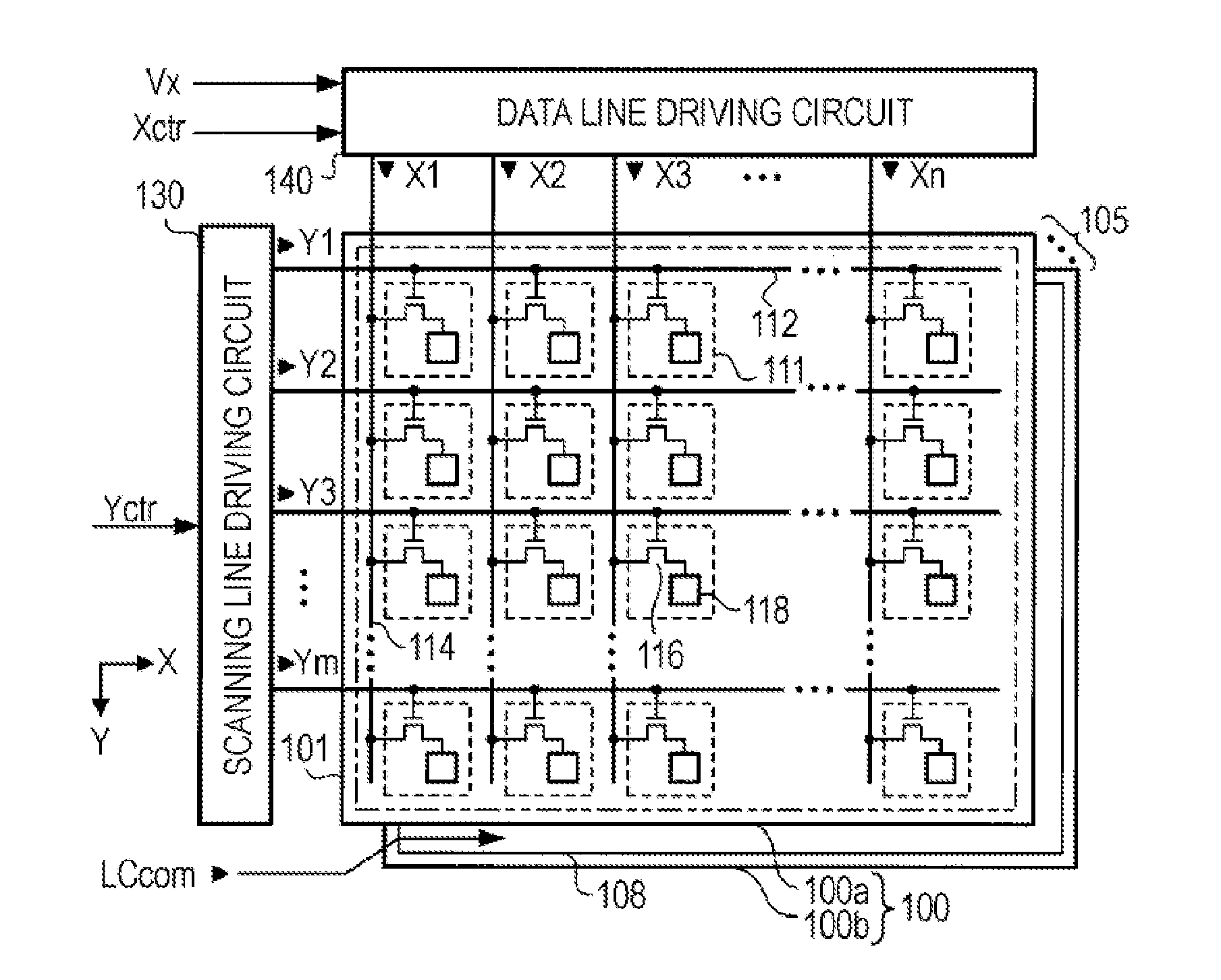Signal processing device, liquid crystal device, electronic apparatus and signal processing method
a liquid crystal device and signal processing technology, applied in the field of reducing disclination, can solve the problems of discrepancy between whether or not correction is necessary and whether or not correction is actually performed, and the display quality of liquid crystal panels to deteriora
- Summary
- Abstract
- Description
- Claims
- Application Information
AI Technical Summary
Benefits of technology
Problems solved by technology
Method used
Image
Examples
first embodiment
1. FIRST EMBODIMENT
1-1. Configuration of Liquid Crystal Device and Problems
[0029]Prior to describing a configuration and an operation of a device in the embodiment, the configuration and problems of the liquid crystal device will be described.
1-1-1. Summary of Liquid Crystal Device
[0030]FIG. 1 is a diagram illustrating a schematic configuration of the liquid crystal device. The liquid display device includes a liquid crystal panel 100, a scanning line drive circuit 130, and a data line drive circuit 140.
[0031]The liquid crystal panel 100 is a device displaying an image according to a supplied signal. The liquid crystal panel 100 includes pixels 111 disposed in a matrix shape with m rows and n columns. The pixels 111 indicates an optical state according to a signal supplied from the scanning line drive circuit 130 and the data line drive circuit 140. The liquid crystal panel 100 displays an image by controlling the optical state of a plurality of pixels 111.
[0032]The liquid crystal p...
second embodiment
2. SECOND EMBODIMENT
[0081]In the first embodiment, for both of the bright pixel and the dark pixel, the correction unit 36 performs the correction by adding the correction amount to the gradation value k of the dark pixel. In the second embodiment, the gradation values are corrected, for the bright pixel, by subtracting the correction amount from the gradation value of the bright pixel W, and for the dark pixel, by adding the correction amount to the gradation value of the dark pixel K respectively. Furthermore, in the second embodiment, the correction of the gradation value is performed for two pixels each on both sides of the risk boundary (four pixels total).
[0082]In the second embodiment, the boundary detection unit 32, as described in the first embodiment, detects a dark pixel adjacent to the risk boundary and a direction of the risk boundary when viewed from the dark pixel. The correction unit 36 performs the correction as described below, with respect to the pixels which sati...
modification example 1
3-1. Modification Example 1
[0089]The conditions for the boundary detection unit 32 to detect the risk boundary is not limited to the conditions (a) to (c) described in the embodiment. In addition to the conditions (a) to (c), the other condition, for example, a condition (d) may be used.
[0090](d) The difference ΔN of the gradation value of the target pixel and that of the adjacent pixel is higher than the threshold value ThN.
(ΔN>ThN)
The pixels on which the corrections are to be performed may be further narrowed by adding this condition. The pixels on which the corrections are to be performed are narrowed to the pixel having a high possibility of the disclination occurring. Therefore, it is possible to suppress the image quality from being decreased due to the excessive changes from the original image displayed by the video signal Vid-in.
PUM
 Login to View More
Login to View More Abstract
Description
Claims
Application Information
 Login to View More
Login to View More - R&D
- Intellectual Property
- Life Sciences
- Materials
- Tech Scout
- Unparalleled Data Quality
- Higher Quality Content
- 60% Fewer Hallucinations
Browse by: Latest US Patents, China's latest patents, Technical Efficacy Thesaurus, Application Domain, Technology Topic, Popular Technical Reports.
© 2025 PatSnap. All rights reserved.Legal|Privacy policy|Modern Slavery Act Transparency Statement|Sitemap|About US| Contact US: help@patsnap.com



